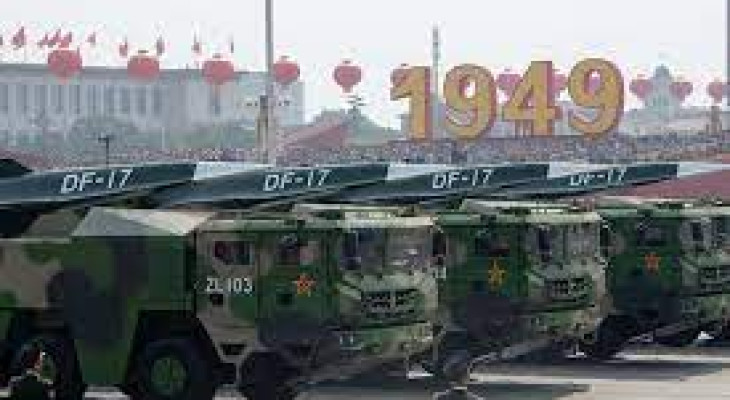What is Havana Syndrome; US blames Russia for the Illness
A joint media investigation released by The Insider, Der Spiegel, and CBS’s 60 Minutes on Monday links a Russian intelligence…

Concerns over China’s expanding capabilities, especially in the area of hypersonic missile technology, have been raised as the country keeps on gaining fast military modernization and scientific achievements. World’s focus on China’s military policy has shifted to hypersonic missiles, which can travel faster than Mach 5. The development of hypersonic missiles by China poses a serious threat to the world’s superpower, the United States’ ability to keep military dominance in the Pacific, where it has long maintained its power. In order to quickly catch up to the United States, China has made impressive progress in developing hypersonic missile technology.
As a representation of its military power and a crucial element of its capacity to project power across the Pacific, the United States has long relied on aircraft carriers, however, these are seriously threatened by China’s hypersonic weapons. In a May 2023 scientific journal article, Chinese researchers claimed that the nation’s hypersonic missiles could ‘certainly’ destroy a U.S. carrier group. This capacity raises the possibility of altering the strategic balance of power, sidelining American aircraft carrier groups in the Pacific, and leaving the United States with few alternatives for aiding Taiwan in the case of a Chinese invasion. Due to the extraordinary speed and manoeuvrability of hypersonic missiles, conventional missile defence systems like Aegis may not be able to intercept them. The US’s historical hegemony is deeply threatened by China’s capacity to target aircraft carriers.
Before moving forward, let us understand what hypersonic missiles are.
The hypersonic vehicle is one that travels substantially faster than the speed of sound, which is 663 mph (1,067 kph) at 35,000 feet (10,668 metres). Passenger planes travel at just under 600 mph (966 kph), while hypersonic systems are capable of 3,500 mph (5,633 kph) or more. The maximum speed of each intercontinental ballistic missile in the nuclear arsenals of the world is approximately 15,000 mph (24,140 kph), or 4 miles (6.4 km) per second. Launched atop smaller rockets, the new generation of hypersonic missiles has its reach within the upper atmosphere.
The Pacific region’s power balance will be significantly impacted by China’s development of hypersonic missiles. These missiles give China a reliable deterrence against future enemies, giving it more confidence to assert its territorial claims. A hypersonic missile threat could deter US partners in the region from taking a strong stance against China because they are concerned about the possible repercussions of a military clash. This might cause the US’s power and supremacy in the Pacific to gradually decline.
The United States and China are now engaged in a technological arms race as a result of China’s achievements in hypersonic missile technology. The US has also increased its own attempts to build hypersonic weapons because of the necessity to maintain its military edge. In addition to placing pressure on defence spending, the rush to develop and use hypersonic weapons raises concerns about the possibility of misunderstanding and escalation between the two giants.
The US supremacy in the Pacific is imperilled by China’s development of hypersonic missiles. These state of art weapons pose a threat to US aircraft carriers, as China increases its capacity to intimidate potential rivals and press its territorial claims more forcefully, the balance of power in the area is shifting. By making investments in cutting-edge missile defence systems, strengthening regional partnerships, and retaining a lead in hypersonic technology, the United States must combat this new threat. The Pacific area is experiencing an intensifying power struggle, and the conclusion will determine the destiny of both the region and the world.
Continue Reading on The India Saga.
Advertisement